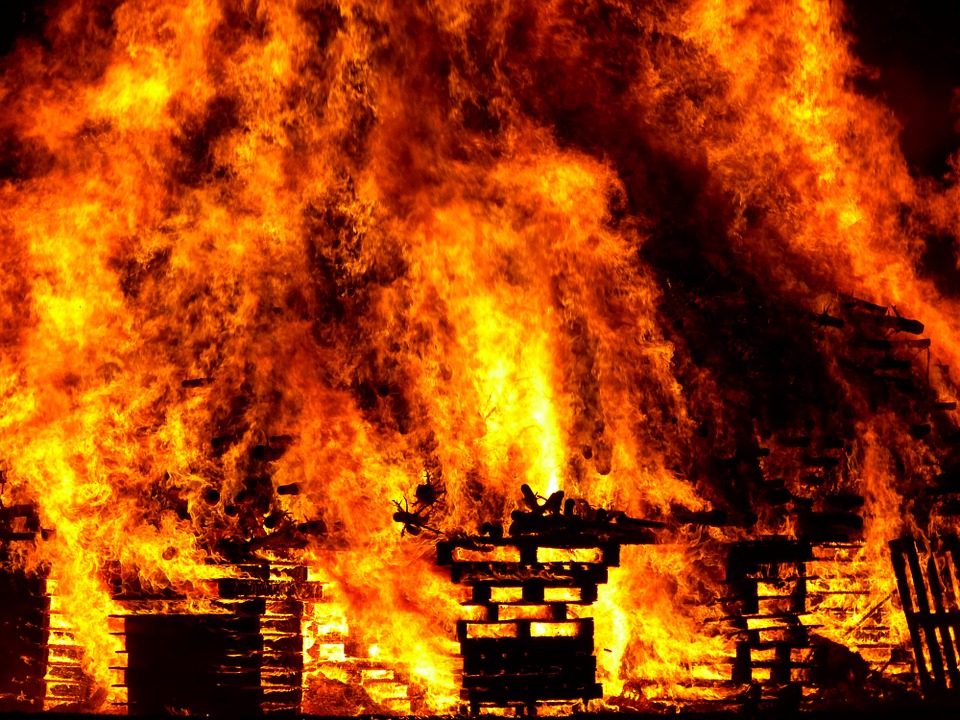Fire is the product of a chemical process. Fire is created and maintained by three things: heat, fuel, and oxygen. Removing any one of these components will extinguish the fire. Thus, you can expect a fire to go out if there is not enough heat, if the fuel runs out, or if the oxygen supply is cut off.
If heat, fuel, and oxygen are all present, then the conditions are ideal for a sustained fire. When a fire starts in your home, there may not be enough time to save anything but yourselves. Fire can engulf an entire home with dizzying speed.
When people understand the speed at which fire can spread, they will be more likely to be cautious about fire risks. They will also know how much time they have to escape when a fire breaks out in their home. While the fire’s movement depends on different conditions, the following example can impart a general idea of the speed of fire.
Here’s a typical timeline of a 2-story house being engulfed by fire:
- At 0:30 minutes, the fire starts and rapidly grows.
- At 1:04 minutes, the fire spreads from the initial flame, and the room begins to fill with smoke.
- At 1:35 minutes, the temperature of the house goes higher than 190°F while the smoke layer rapidly descends.
- At 1:50 minutes, the smoke detector goes off, and there is still remaining time to get out of the house.
- At 2:30 minutes, the temperature in the source room climbs above 400°F.
- At 2:48 minutes, smoke will start pouring into the other rooms of the house.
- At 3:03 minutes, the temperature in the room where the fire began will reach over 500°F. No human can survive that kind of heat.
- At 3:20 minutes, escaping will be very challenging, with the upstairs halls filled with smoke.
- At 3:41 minutes, a “flashover” occurs. Everything in the room where the fire originated will ignite, with the temperature exceeding 1,400°F.
- At 3:50 minutes, two minutes after the smoke detector went off, the only possible way out is the second exit.
- At 4:33 minutes, flames will have engulfed the home’s exterior. Rescue is no longer possible.
It takes less than five minutes for a fire to completely engulf most homes. There is not much time to decide what to do. Fire waits for no man. It is critical to make a plan in advance. Hesitation could mean the difference between life and death.
If you do experience a fire, Utah fire restoration teams are poised to help with clean up. At Disaster Company, we handle Layton and Bountiful fire clean up quickly and efficiently.
It is important to learn how to prevent the fire from getting uncontrollable. There are things that can help you from doing that such as using a small fire detector to warn your family in case a fire breaks out anywhere in the house. Also, having a fire extinguisher and fire blanket in the kitchen; the most susceptible place to fire; can be a big help in putting out the fire. Check this ifographic.


